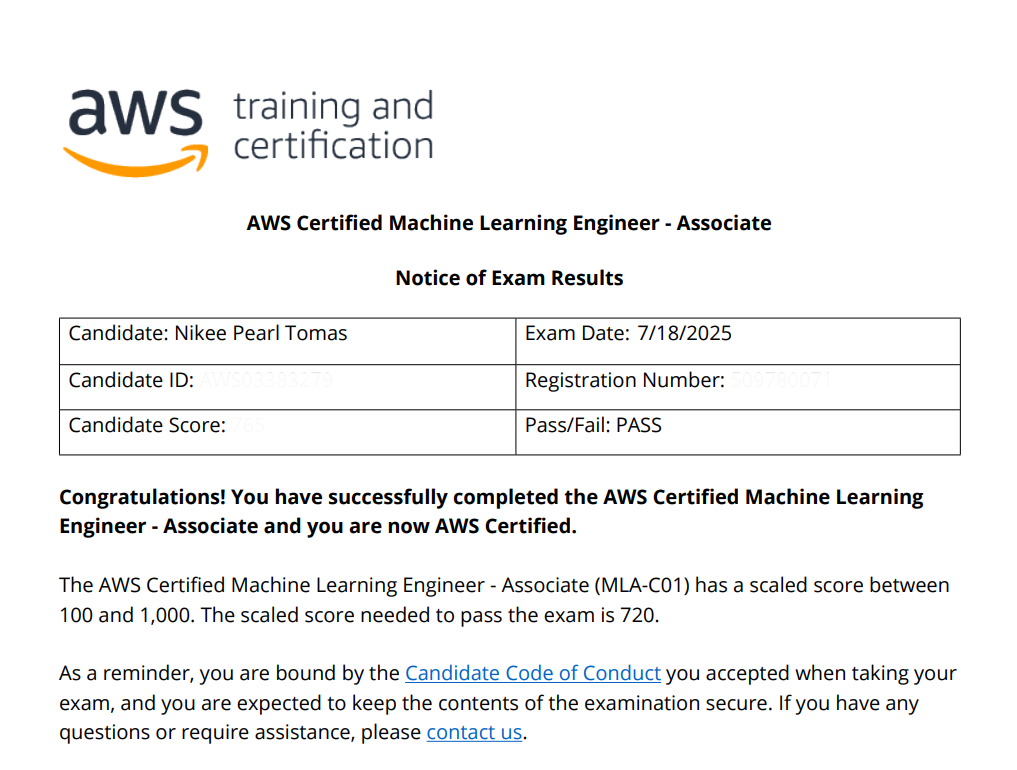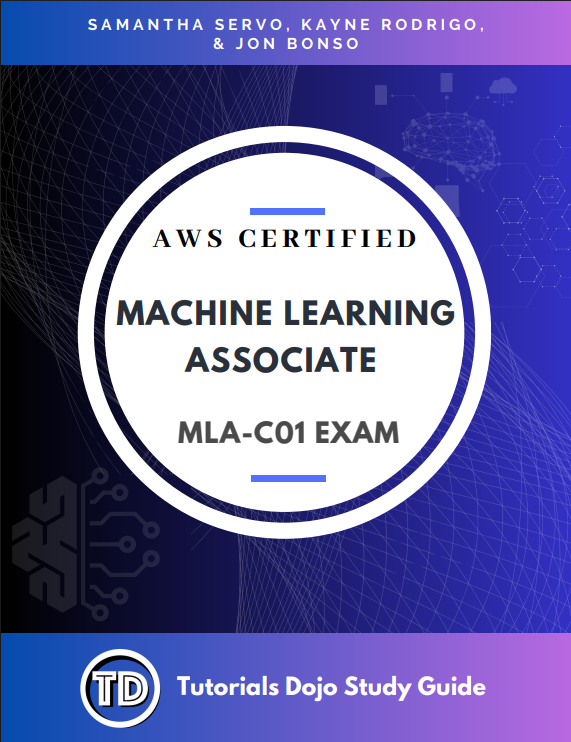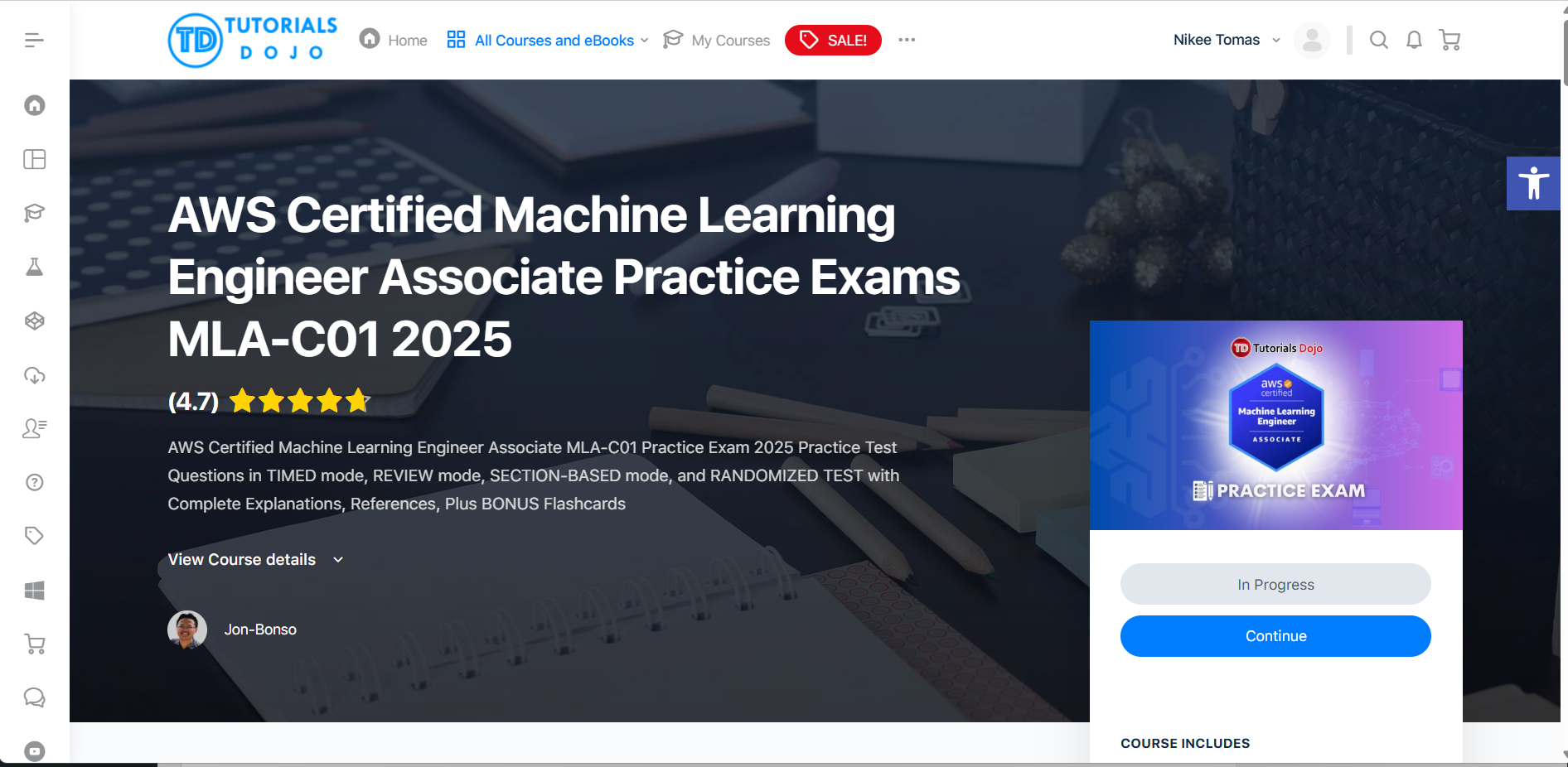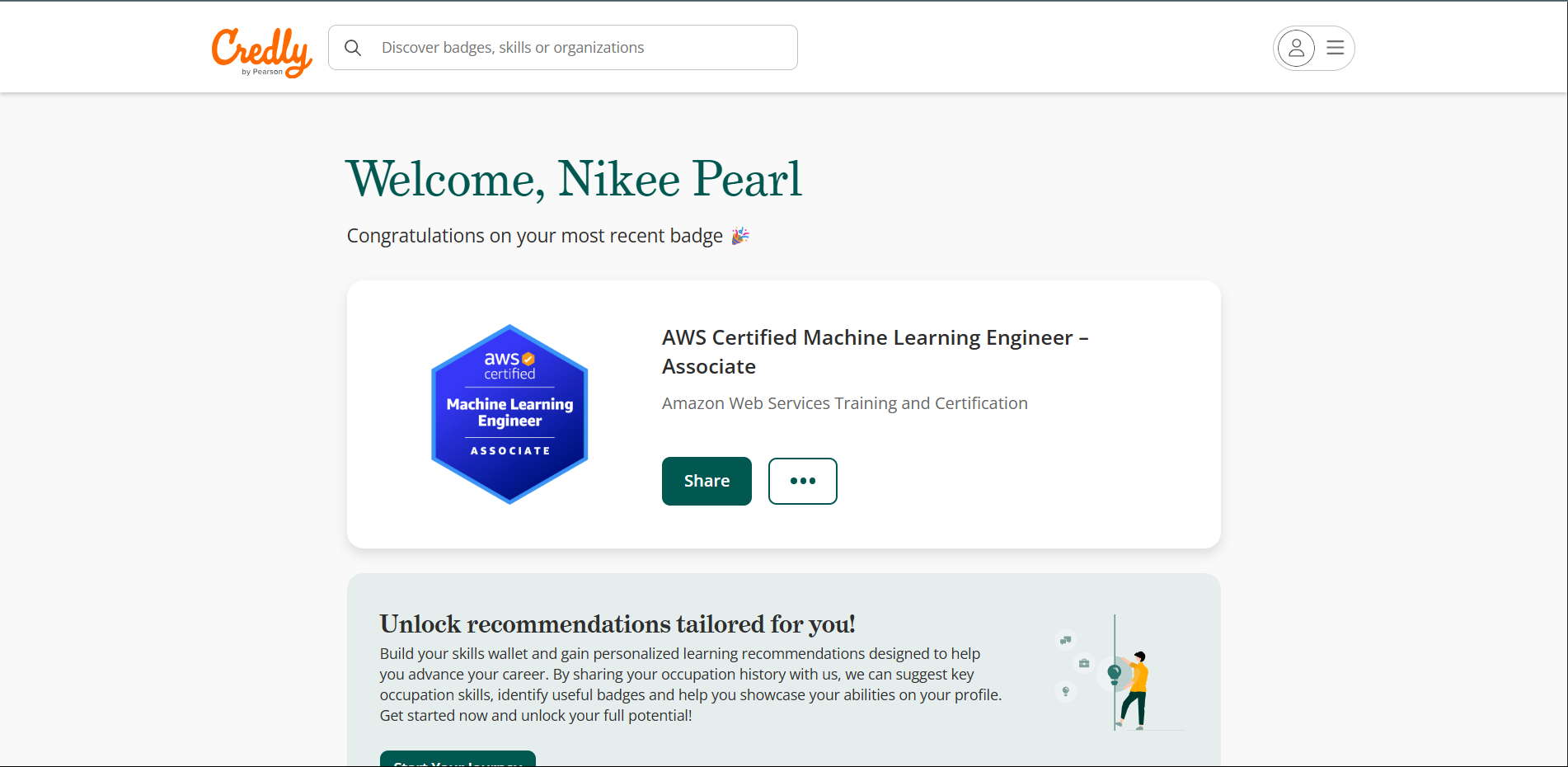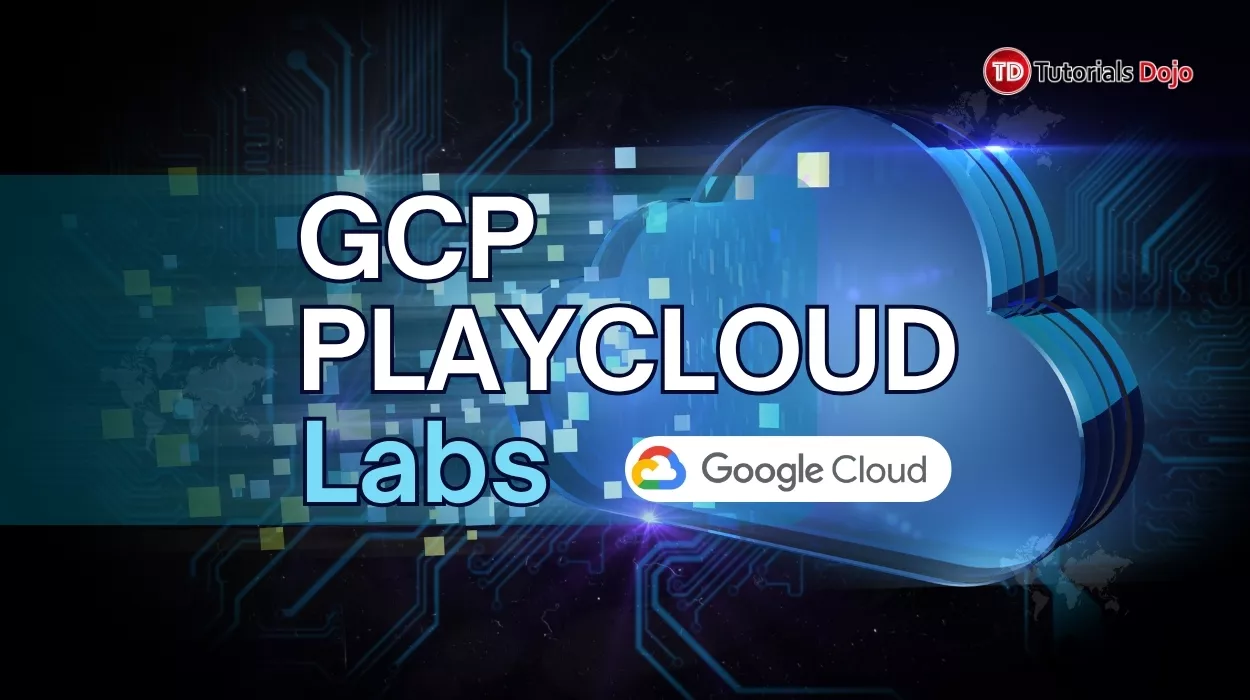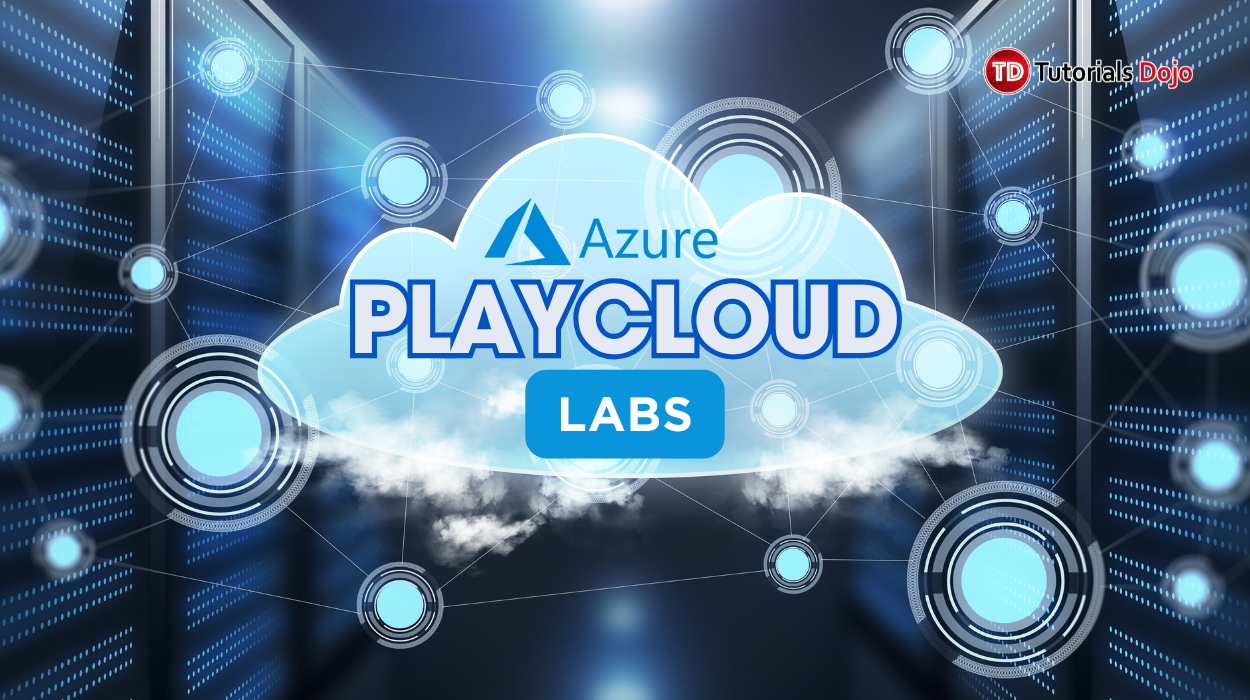Earning the AWS Certified Machine Learning Engineer – Associate MLA-C01 certification was one of the most challenging yet rewarding experiences of my career in 2025. The journey was filled with intense study sessions since I’m working full-time, hands-on practice, and even an unexpected hurdle on exam day that forced me to reschedule. Through it all, I relied on a combination of Tutorials Dojo’s practice exams, the comprehensive study guide eBook, and AWS SkillBuilder’s structured learning paths to guide my preparation. Here’s a detailed account of how I conquered this certification—and the lessons I learned along the way.
The Decision to Pursue the Certification
As a professional aiming to upskill in the fast-evolving field of machine learning, I recognized that earning an AWS certification would provide a valuable competitive edge. The AWS Certified Machine Learning – Associate certification stood out to me because it emphasizes not only theoretical foundations but also the practical implementation, deployment, and optimization of ML models within the AWS environment. After some careful research, I committed to a one-month preparation plan—all while managing the demands of a full-time job.
Structured Preparation: A One-Month Deep Dive
Phase 1: Building Foundational Knowledge (Week 1)
I began my journey by thoroughly reviewing the MLA-C01 Exam Guide to understand the four key domains: Data Preparation for Machine Learning (ML), ML Model Development, Deployment and Orchestration of ML Workflows, and ML Solution Monitoring, Maintenance, and Security. While AWS SkillBuilder provided structured courses on Amazon SageMaker AI, Rekognition, and Comprehend, I quickly realized that I needed a more targeted, exam-focused approach, which is Tutorials Dojo.
Phase 2: Intensive Study with Tutorials Dojo (Week 2-3)
This phase was where Tutorials Dojo truly became my primary resource. The Study Guide eBook was my daily companion, breaking down complex topics like SageMaker’s built-in algorithms, hyperparameter tuning, and deployment strategies into clear, digestible sections. I made detailed notes and revisited weak areas multiple times to ensure retention.
However, the real game-changer was the practice exams. These weren’t just generic quizzes; they mirrored the actual exam’s difficulty, phrasing, and scenario-based format. I took four full-length tests under timed conditions, tracking my progress from 65% on the first attempt to 85% by the randomized test. What made these exams invaluable were the detailed explanations for every answer, which didn’t just tell me what was correct but why, helping me internalize concepts rather than memorize answers.
Phase 3: Final Review (Week 4) – Reinforcing Knowledge with AWS SkillBuilder Practice Exam
In the final stretch, I shifted from learning new material to fine-tuning my understanding and simulating real exam conditions. While I still relied on Tutorials Dojo’s explanations for reinforcement, I also took the official AWS SkillBuilder practice exam to gauge my readiness.
This helped me identify any remaining weak spots. I ran multiple timed sessions, treating each as a dress rehearsal for exam day. After each attempt, I cross-referenced my mistakes with Tutorials Dojo’s study guide to solidify my grasp on tricky topics.
By the end of Week 4, I felt confident and exam-ready, thanks to the perfect blend of Tutorials Dojo’s depth and AWS SkillBuilder’s official perspective. The structured preparation ensured I wasn’t just memorizing facts but truly understanding how to architect ML solutions in AWS.
Exam Day Drama: The Unexpected ID Issue
After a month of preparation, I was ready, or so I thought. I scheduled my exam via Pearson VUE for an online proctored session. However, during the check-in process, I hit a major roadblock: my only valid ID was a Philippine Postal ID, which was rejected.
Why Was My ID Rejected?
Pearson VUE requires a government-issued ID with a photo and signature. While the Philippine Postal ID is government-issued, it does not include a signature, making it invalid for verification.
The Frantic Rescheduling Process
My heart sank when the proctor rejected my ID at the start of the exam. I quickly reached out to Pearson VUE support, hoping there might be some flexibility in the policy. Unfortunately, their guidelines were clear—no exceptions would be made. As a result, I had to reschedule my exam and ensure I had a valid form of identification ready for the next attempt.
The real challenge came with securing proper identification. Booking a passport renewal appointment proved unexpectedly difficult, with DFA offices completely booked for a month. I had no choice but to schedule an appointment and opt for their rush processing service, nervously counting down the days until my new exam date. The entire ordeal stretched what should have been a simple check-in process into a month-long saga.
This experience taught me a critical lesson that extends beyond technical preparation: always verify administrative requirements well in advance. While technical skills are paramount for certification success, logistical oversights can derail even the most prepared candidates. I now religiously advise everyone: when scheduling AWS exams, always have either a passport or driver’s license ready – these universally accepted documents eliminate unnecessary stress and uncertainty.
The Actual Exam Experience
Checking in to the exam, this time with my passport ready, I felt a mix of nerves and determination. The test itself consisted of 65 questions spanning multiple-choice, drop-down, case study, and multiple-response formats, all to be completed within a tight 170-minute window. The difficulty level was on par with the most challenging Tutorials Dojo practice exams I had taken, reinforcing just how valuable those simulations had been. Questions dug deep into practical scenarios, particularly around SageMaker AI Services. Hyperparameter optimization was another major theme, forcing me to weigh the pros and cons of random search versus Bayesian optimization in different contexts. Cost management came up, testing my ability to choose between Spot Instances and On-Demand training based on budget and time constraints. To manage my time, I adopted a strategy of flagging the toughest questions (about 16 of them) and circling back after answering the more straightforward ones. By the time I clicked submit, only 20 minutes remained, leaving me both exhausted and cautiously optimistic.
The Longest Night: Waiting for My Results
I finished my exam passed midnight, my brain buzzing with a mix of exhaustion and adrenaline. Sleep? Impossible. Every flagged question I’d second-guessed played on loop in my mind. I have checked my email a dozen times before finally drifting off around 2 AM.
When my alarm blared at 6 AM, I grabbed my phone before even opening my eyes, and there it was. The email. I held my breath as I tapped it open, and then… “Congratulations.” Just one word, but it flooded me with the kind of relief that makes you laugh out loud alone in your bedroom. I immediately checked my AWS Certification account, and sure enough, my shiny new badge was already there, waiting for me.
Looking back, I owe my success to two key resources: Tutorials Dojo’s brutally accurate practice exams and AWS SkillBuilder’s hands-on labs. Those practice tests didn’t just assess my knowledge; they rewired how I thought about problems.
Final Advice for Future Test-Takers
If you’re preparing for this exam, my biggest recommendation is to strike a balance between study and action. When it comes to test prep, invest in high-quality practice exams like Tutorials Dojo’s, and treat them as diagnostic tools. Don’t just tally your score; analyze every incorrect answer until you understand the underlying concept. Time management is another critical skill—practice under real exam conditions so you’re not caught off guard by the clock. And perhaps the most practical tip: double-check your ID requirements as soon as you schedule the test. A passport or driver’s license is the safest bet, saving you from the last-minute scramble I endured. Finally, trust the process. This exam is challenging but fair, and if you put in the work, especially the hands-on kind, you’ll walk out with more than just a certification. You’ll have the confidence to architect real-world ML solutions in AWS, and that’s what truly matters.

